- Clone
- ICRF44 (See other available formats)
- Regulatory Status
- RUO
- Workshop
- IV M047
- Other Names
- Integrin αM chain, C3biR, CR3, Mac-1, Mo1, ITGAM
- Isotype
- Mouse IgG1, κ
- Barcode Sequence
- GACAAGTGATCTGCA
- Ave. Rating
- Submit a Review
- Product Citations
- publications
| Cat # | Size | Price | Quantity Check Availability | Save | ||
|---|---|---|---|---|---|---|
| 301363 | 10 µg | 296€ | ||||
CD11b is a 165-170 kD type I transmembrane glycoprotein also known as αM integrin, Mac-1, CR3, and C3biR. CD11b non-covalently associates with integrin β2 (CD18) and is expressed on granulocytes, monocytes/macrophages, dendritic cells, NK cells, and subsets of T and B cells. CD11b/CD18 is critical for the transendothelial migration of monocytes and neutrophils. It is also involved in granulocyte adhesion, phagocytosis, and neutrophil activation. CD11b/CD18 interacts with ICAM-1 (CD54), ICAM-2 (CD102), ICAM-4, CD14, CD23, heparin, iC3b, fibrinogen, and factor X.
Product DetailsProduct Details
- Verified Reactivity
- Human, Cynomolgus, Rhesus
- Reported Reactivity
- African Green, Baboon, Chimpanzee, Common Marmoset, Pig
- Antibody Type
- Monoclonal
- Host Species
- Mouse
- Formulation
- Phosphate-buffered solution, pH 7.2, containing 0.09% sodium azide and EDTA
- Preparation
- The antibody was purified by chromatography and conjugated with TotalSeq™-D oligomer under optimal conditions.
- Concentration
- 0.5 mg/mL
- Storage & Handling
- The antibody solution should be stored undiluted between 2°C and 8°C. Do not freeze.
- Application
-
PG - Quality tested
- Recommended Usage
-
Each lot of this antibody is quality control tested by immunofluorescent staining with flow cytometric analysis and the oligomer sequence is confirmed by sequencing. TotalSeq™-D antibodies are compatible with Mission Bio’s Tapestri Single-Cell Sequencing Platform for simultaneous detection of DNA and Protein.
To maximize performance, it is strongly recommended that the reagent be titrated for each application, and that you centrifuge the antibody dilution before adding to the cells at 14,000xg at 2 - 8°C for 10 minutes. Carefully pipette out the liquid avoiding the bottom of the tube and add to the cell suspension. For Proteogenomics analysis, the suggested starting amount of this reagent for titration is ≤ 1.0 µg per million cells in 100 µL volume. Refer to the corresponding TotalSeq™ protocol for specific staining instructions.
Buyer is solely responsible for determining whether Buyer has all intellectual property rights that are necessary for Buyer's intended uses of the BioLegend TotalSeq™ products. For example, for any technology platform Buyer uses with TotalSeq™, it is Buyer's sole responsibility to determine whether it has all necessary third party intellectual property rights to use that platform and TotalSeq™ with that platform. - Application Notes
-
The ICRF44 antibody inhibits heterotypic adhesion of granulocytes in response to fMLP. Additional reported applications (for the relevant formats) include: immunohistochemical staining of acetone-fixed frozen tissue sections, immunofluorescence microscopy5, stimulation of monocytes3, blocking of heterotypic PMN aggregation8, and blocking of granulocyte activation12. This clone was tested in-house and does not work on formalin fixed paraffin-embedded (FFPE) tissue.
The Ultra-LEAF™ purified antibody (Endotoxin < 0.01 EU/µg, Azide-Free, 0.2 µm filtered) is recommended for functional assays (Cat. Nos. 301361 & 301362). - Additional Product Notes
-
TotalSeq™-D reagents are designed to profile protein expression at single cell level. The Mission Bio Tapestri platform and sequencer (e.g. Illumina analyzers) are required. Please contact technical support for more information, or visit biolegend.com/totalseq/single-cell-dna
The barcode flanking sequences are CGAGATGACTACGCTACTCATGG (PCR handle), and GAGCCGATCTAGTATCTCAGT*C*G (capture sequence). * indicates a phosphorothioated bond, to prevent nuclease degradation.
View more applications data for this product in our Application Technical Notes. - Application References
-
- Knapp W. 1989. Leucocyte Typing IV. Oxford University Press New York.
- Barclay N, et al. 1997. The Leucocyte Antigen Facts Book. Academic Press Inc. San Diego.
- Rezzonico R, et al. 2001. Blood 97:2932. (Stim)
- Marsik C, et al. 2003. Shock 20:493. (FC)
- David A, et al. 2003. J. Leukoc. Biol. 74:551. (IF)
- Charles N, et al. 2010. Nat. Med. 16:701. (FC) PubMed
- Thurlow LR, et al. 2010. Infect. Immun. 128:1128. (FC) PubMed
- Jadhav S, et al. 2001. J. Immunol. 167:5986. (Block)
- Yoshino N, et al. 2000. Exp. Anim. (Tokyo) 49:97. (FC)
- Sestak K, et al. 2007. Vet. Immunol. Immunopathol. 119:21. (FC)
- Wen T, et al. 2014. J Immunol. 192:5481. (FC) PubMed
- Sprong T, et al. 2003. Blood 102:3702. (Block)
- Cash JL, et al. 2013. EMBO Rep. 14:999. (FC) PubMed
- Larsson K, et al. 2015. PNAS. PubMed
- RRID
-
AB_2892345 (BioLegend Cat. No. 301363)
Antigen Details
- Structure
- Integrin, type I transmembrane glycoprotein, associates with integrin β2 (CD18), 165-170 kD
- Distribution
-
Granulocytes, monocytes/macrophages, dendritic cells, NK cells, subset of T cells, subset of B cells
- Function
- Adhesion, phagocytosis, chemotaxis, neutrophil activation
- Ligand/Receptor
- ICAM-1(CD54), ICAM-2 (CD102), ICAM-4, CD14, CD23, heparin, iC3b, fibrinogen, factor X
- Cell Type
- B cells, Dendritic cells, Granulocytes, Macrophages, Monocytes, Neutrophils, NK cells, T cells, Tregs
- Biology Area
- Cell Adhesion, Cell Biology, Costimulatory Molecules, Immunology, Innate Immunity, Neuroscience, Neuroscience Cell Markers
- Molecular Family
- Adhesion Molecules, CD Molecules
- Antigen References
-
1. Stewart M, et al. 1995. Curr Opin Cell Biol. 7:690.
- Gene ID
- 3684 View all products for this Gene ID
- UniProt
- View information about CD11b on UniProt.org
Other Formats
View All CD11b Reagents Request Custom ConjugationCompare Data Across All Formats
This data display is provided for general comparisons between formats.
Your actual data may vary due to variations in samples, target cells, instruments and their settings, staining conditions, and other factors.
If you need assistance with selecting the best format contact our expert technical support team.
-
APC anti-human CD11b
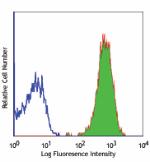
Human peripheral blood granulocytes stained with ICRF44 APC -
Biotin anti-human CD11b

Human peripheral blood granulocytes stained with biotinylate... -
PE anti-human CD11b

Human peripheral blood granulocytes were stained with CD11b ... -
PE/Cyanine5 anti-human CD11b

Human peripheral blood lymphocytes, monocytes, and granulocy... -
Purified anti-human CD11b
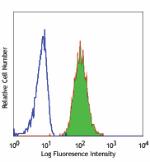
Human peripheral blood granulocytes stained with purified IC... -
Pacific Blue™ anti-human CD11b
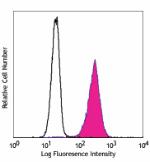
Human peripheral blood granulocytes stained with ICRF44 Paci... -
Alexa Fluor® 488 anti-human CD11b

Human peripheral blood lymphocytes, monocytes, and granulocy... -
Alexa Fluor® 647 anti-human CD11b
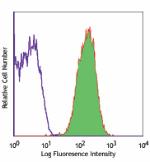
Human peripheral blood granulocytes stained with ICRF44 Alex... -
PE/Cyanine7 anti-human CD11b
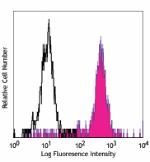
Human peripheral blood monocytes stained with ICRF44 PE/Cyan... -
PerCP/Cyanine5.5 anti-human CD11b

Human peripheral blood lymphocytes, monocytes, and granulocy... -
Brilliant Violet 421™ anti-human CD11b
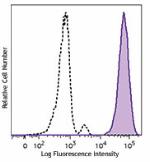
Human peripheral blood granulocytes were stained with CD11b ... 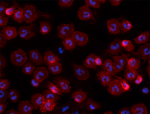
Human neutrophils were fixed with 1% paraformaldehyde (PFA) ... -
Brilliant Violet 570™ anti-human CD11b
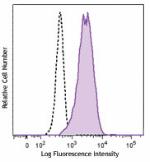
Human peripheral blood granulocytes were stained with CD11b ... -
FITC anti-human CD11b
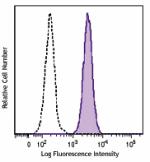
Human peripheral blood granulocytes were stained with CD11b ... -
Brilliant Violet 605™ anti-human CD11b
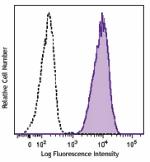
Human peripheral blood granulocytes were stained with CD11b ... -
Brilliant Violet 510™ anti-human CD11b
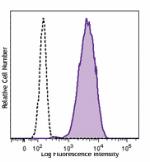
Human peripheral blood granulocytes were stained with CD11b ... 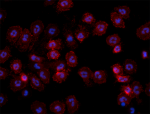
Human neutrophils were fixed with 1% paraformaldehyde (PFA) ... -
Brilliant Violet 650™ anti-human CD11b
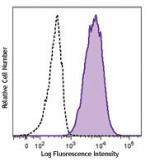
Human peripheral blood granulocytes were stained with CD11b ... -
Purified anti-human CD11b (Maxpar® Ready)
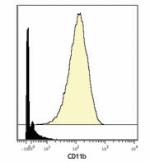
Human PBMCs stained with 144Nd-anti-CD11b (ICRF44). T lympho... -
Alexa Fluor® 594 anti-human CD11b
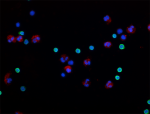
Human peripheral blood mononuclear cells and neutrophil mixe... 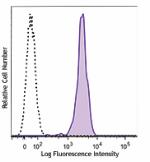
Human peripheral blood granulocytes were stained with CD11b ... -
APC/Cyanine7 anti-human CD11b

Human peripheral blood lymphocytes, monocytes, and granulocy... -
Brilliant Violet 711™ anti-human CD11b
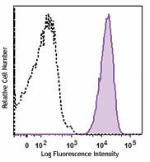
Human peripheral blood granulocytes were stained with CD11b ... -
Brilliant Violet 785™ anti-human CD11b
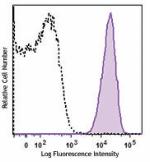
Human peripheral blood granulocytes were stained with CD11b ... -
PE/Dazzle™ 594 anti-human CD11b
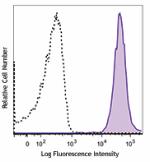
Human peripheral blood granulocytes were stained with CD11b ... -
APC/Fire™ 750 anti-human CD11b
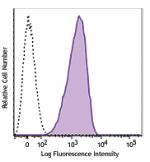
Human peripheral blood granulocytes were stained with CD11b ... -
APC anti-human CD11b

Typical results from human peripheral blood granulocytes sta... -
PE anti-human CD11b

Typical results from human peripheral blood granulocytes sta... -
TotalSeq™-A0161 anti-human CD11b
-
Alexa Fluor® 700 anti-human CD11b

Human peripheral blood lymphocytes, monocytes, and granulocy... -
PE/Cyanine7 anti-human CD11b

Typical results from human peripheralblood monocytes stained... -
TotalSeq™-B0161 anti-human CD11b
-
TotalSeq™-C0161 anti-human CD11b
-
PerCP/Cyanine5.5 anti-human CD11b

Typical results from human peripheral blood granulocytes sta... -
Ultra-LEAF™ Purified anti-human CD11b

Human peripheral blood granulocytes stained with purified IC... -
TotalSeq™-D0161 anti-human CD11b
-
GMP PE/Cyanine7 anti-human CD11b
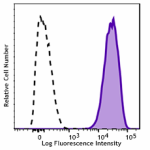
Typical results from human peripheral blood granulocytes sta... -
Pacific Blue™ anti-human CD11b
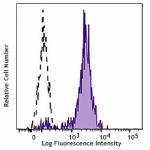
Typical results from human peripheral blood granulocytes sta... -
GMP PE anti-human CD11b
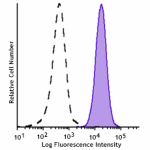
Typical results from human peripheral blood granulocytes sta... -
Spark UV™ 387 anti-human CD11b
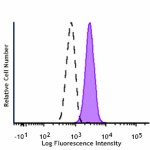
Human peripheral blood granulocytes were stained with anti-h... -
GMP PerCP/Cyanine5.5 anti-human CD11b
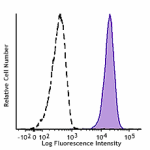
Typical results from human peripheral blood granulocytes sta... -
FITC anti-human CD11b
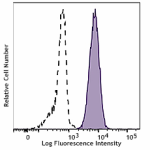
Typical results from human peripheral blood Granulocytes sta... -
APC/Fire™ 750 anti-human CD11b
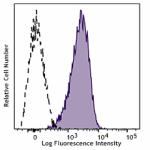
Typical results from human peripheral blood granulocytes sta... -
GMP APC anti-human CD11b
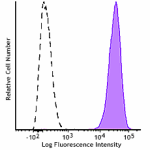
Typical results from human peripheral blood granulocytes sta... -
GMP FITC anti-human CD11b
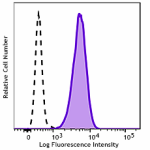
Typical results from human peripheral blood Granulocytes sta... -
GMP APC/Fire™ 750 anti-human CD11b
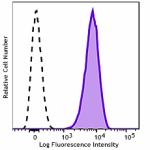
Typical results from human peripheral blood granulocytes sta... -
Spark Blue™ 515 anti-human CD11b
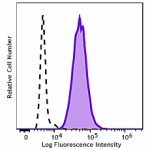
Human peripheral blood granulocytes were stained with anti-h... 
Human peripheral blood lymphocytes, monocytes, and granulocy... -
Spark Violet™ 500 anti-human CD11b

Human peripheral blood granulocytes were stained with anti-h... -
Spark Red™ 718 anti-human CD11b (Flexi-Fluor™)
 Login / Register
Login / Register 














Follow Us